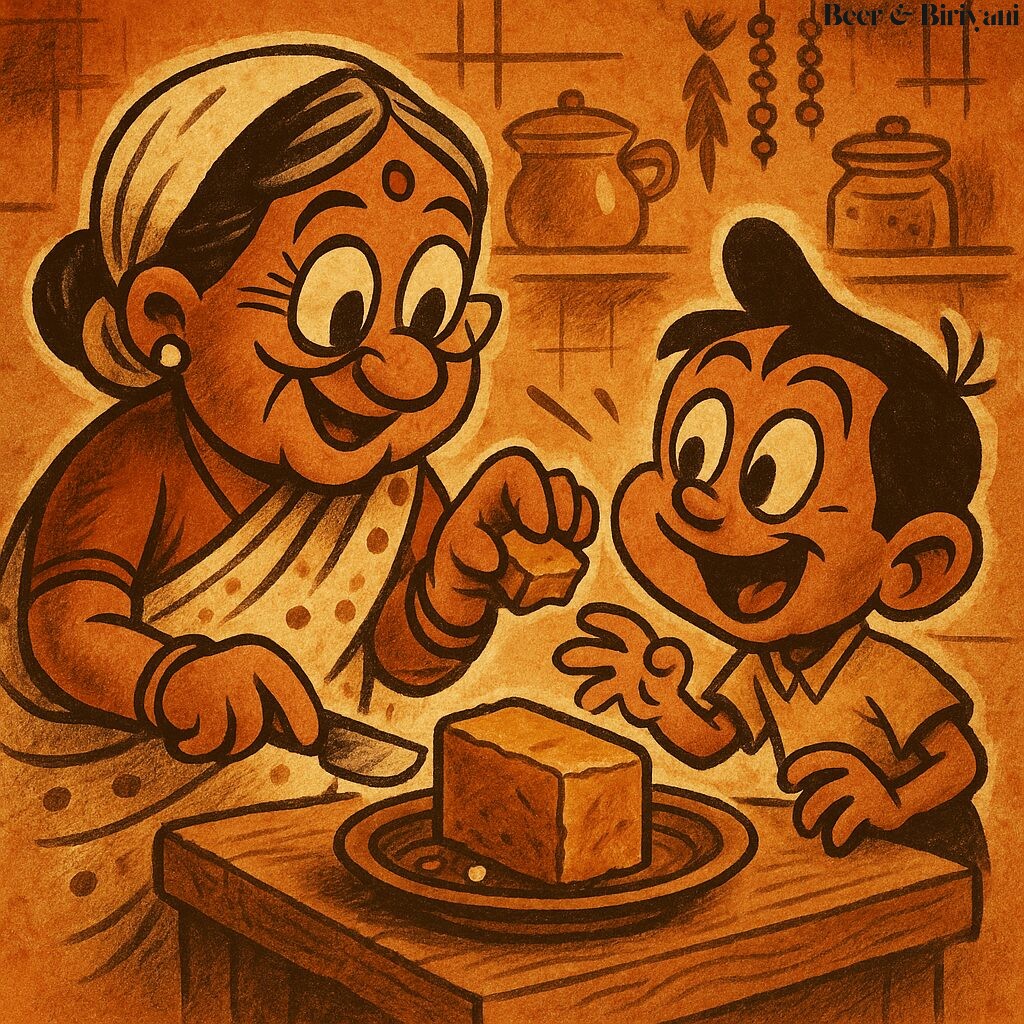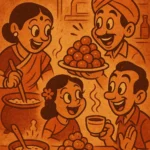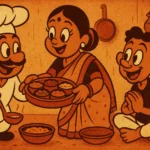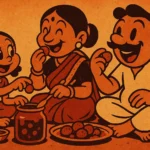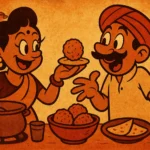There’s sugar, and then there’s jaggery. And once you’ve grown up with the latter—sticky, golden-brown, wrapped in crinkly newspaper from your local kirana—the former feels like it skipped school. Sugar sweetens. Jaggery remembers.
I still remember the clunky brick of gud my grandmother kept in the corner of the pantry. It wasn’t stored in a fancy glass jar or some airtight container. Just a metal tin, dented on one side, lined with a scrap of butter paper. You didn’t “use” jaggery so much as approach it, like a relic. You chiseled off a piece with the back of a spoon. Then snuck half of it into your mouth and hoped no one noticed.
Not Just Sweet—Complex
Made from sugarcane juice (or sometimes palm sap), jaggery is boiled, stirred, and poured into molds, where it sets into something between fudge and molasses in solid form. Unlike refined sugar, which has all the subtlety of a marching band, jaggery is layered. It’s smoky, earthy, occasionally floral, and sometimes even salty depending on where it’s made. Every region in India has its own flavor profile, from the dark intensity of Kolhapur jaggery to the light, almost lemony notes of Kerala’s palm jaggery.
It’s one of those ingredients that smells like something is happening. Real cooking. Real comfort. Real digestion, too—because no Indian meal was truly over without a post-meal sliver of gud. “It helps with digestion,” my grandfather would mumble while popping another piece, conveniently ignoring that this was his fifth.
Gud Was a Gesture
In our Mumbai home, a small plate of jaggery and ghee would sometimes appear next to rotis if the vegetables were uninspired. My mother’s silent apology. “I know the bhindi didn’t turn out right, but here’s some happiness anyway.” And it worked. The ghee pooled into the jaggery’s ridges, and the roti mopped it up like it was the most important course of the meal.
During Sankranti, we made til-gud laddus, rolling the sticky mixture of sesame and melted jaggery into warm spheres that burned our palms but warmed our hearts. These weren’t just sweets—they were edible proverbs. “Til-gud ghya, god god bola,” we’d say. Take this, and speak sweetly. Try doing that with a packet of Splenda.
The Texture of Time
What I miss most about jaggery is how unapologetically itself it is. It doesn’t dissolve easily. You have to coax it. Let it melt slowly over low heat while it hisses and caramelizes. In chakkara pongal, it blooms into depth. In gur ki kheer, it hums under the rice and milk like a quiet bass note. And in adirasam or puran poli, it becomes the heartbeat of the dish—impossible to fake or replace.
There’s an old-school masculinity to it too, if you think about it. The kind that wears khadi and works in the fields. That smells faintly of the sun and dust. And yet, it crumbles at the lightest touch. Soft. Honest. Utterly vulnerable when you need it to be.
Now in a Plastic Pouch, But Still
Here in Austin, I buy my jaggery in neatly vacuum-packed cubes from the Indian grocery store. It’s cleaner, more efficient. But a little less romantic. I miss the irregularity. The jagged edges. The surprise pockets of chewiness or crunch. Still, it does the job. I melt it into payasam. I swirl it into chai when I need something deeper than sweetness. I nibble it plain on days when homesickness is more a flavor than a feeling.
Jaggery isn’t just a sweetener. It’s a slow pause. A hand-me-down. A seasoning for memory. It tastes like what food used to be before we got busy chasing health benefits and glycemic indexes.
Sugar is a commodity. Jaggery is a philosophy.
Born in Mumbai, now stir-frying feelings in Texas. Writes about food, memory, and the messy magic in between — mostly to stay hungry, sometimes just to stay sane.

